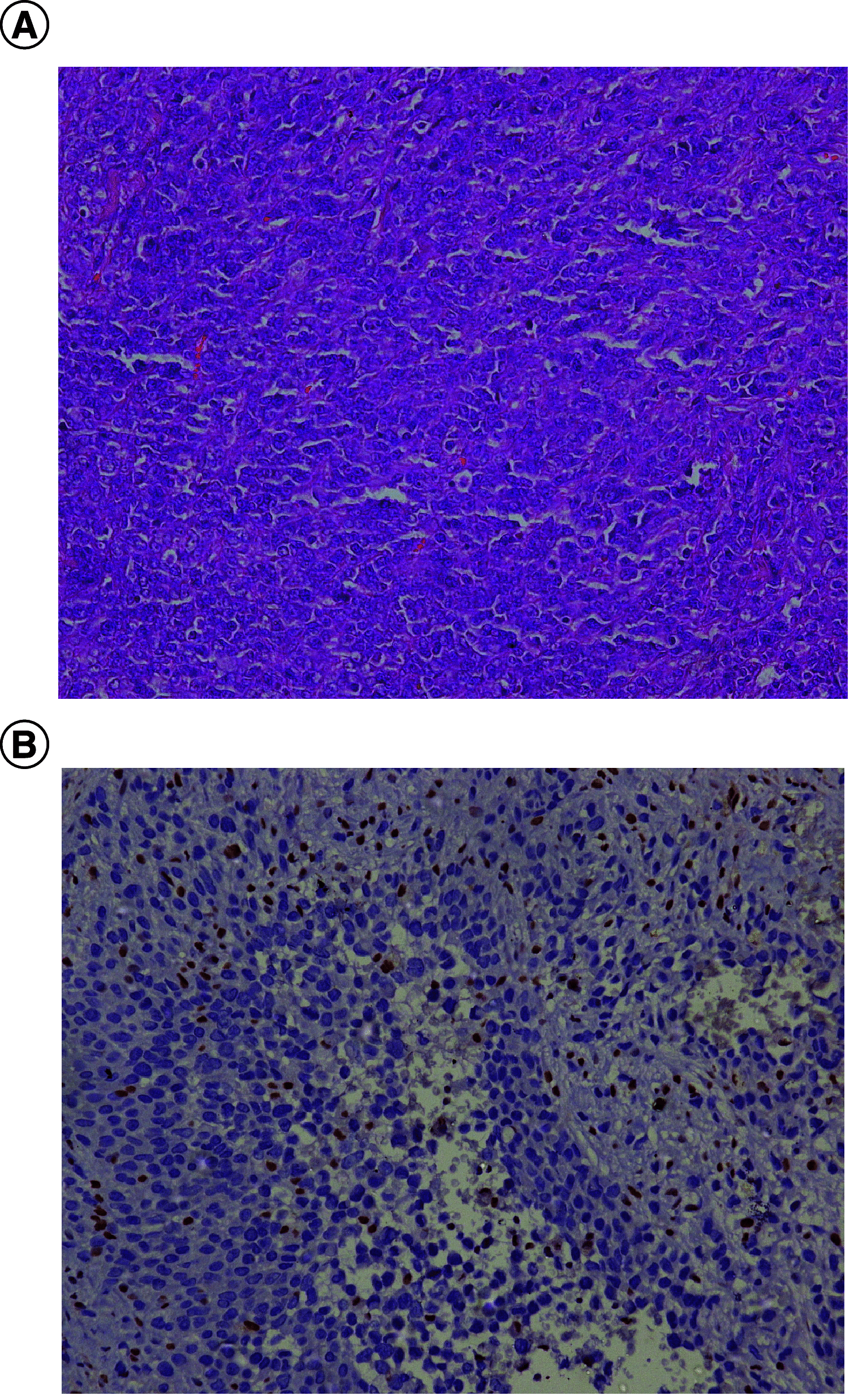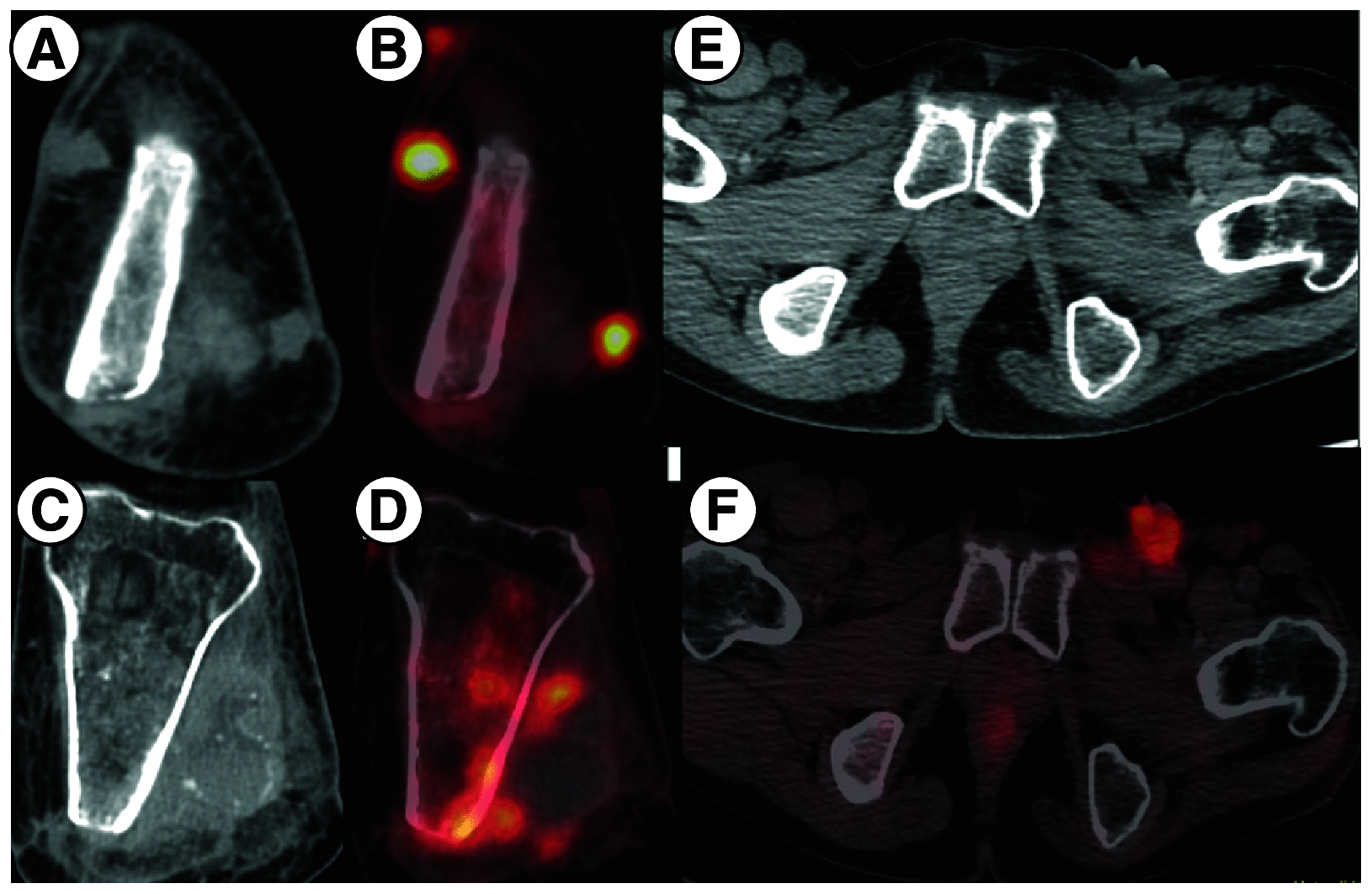Early clinical and metabolic response to tazemetostat in advanced relapsed INI1 negative epithelioid sarcoma
- PMID: 33815821
- PMCID: PMC8015673
- DOI: 10.2144/fsoa-2020-0173
Early clinical and metabolic response to tazemetostat in advanced relapsed INI1 negative epithelioid sarcoma
Abstract
Epithelioid sarcoma (ES) is a rare soft tissue sarcoma with an incidence of 0.05 per 100,000 population in the USA. It is characterized by multiple local recurrences and regional lymph nodes form the commonest site of metastases. The function of Integrase Inhibitor 1 (INI1) protein is lost in more than 90% of cases, which was the basis for the introduction of tazemetostat into the therapeutic armamentarium for management of advanced ES. The efficacy and manageable toxicity profile of tazemetostat have been demonstrated recently, leading to its accelerated approval for treatment of advanced ES. We report one of the first real-world cases of relapsed, metastatic ES treated with tazemetostat. The patient attained partial response with the therapy and is tolerating the drug well without serious toxicities.
Keywords: epigenetics; epithelioid sarcoma; personalized medicine; targeted therapy; tazemetostat.
© 2021 Ghazal Tansir.
Conflict of interest statement
Financial & competing interests disclosure The authors have no relevant affiliations or financial involvement with any organization or entity with a financial interest in or financial conflict with the subject matter or materials discussed in the manuscript. This includes employment, consultancies, honoraria, stock ownership or options, expert testimony, grants or patents received or pending, or royalties. No writing assistance was utilized in the production of this manuscript.
Figures



Similar articles
-
Tazemetostat in advanced epithelioid sarcoma with loss of INI1/SMARCB1: an international, open-label, phase 2 basket study.Lancet Oncol. 2020 Nov;21(11):1423-1432. doi: 10.1016/S1470-2045(20)30451-4. Epub 2020 Oct 6. Lancet Oncol. 2020. PMID: 33035459 Clinical Trial.
-
Tazemetostat for advanced epithelioid sarcoma: current status and future perspectives.Future Oncol. 2021 Apr;17(10):1253-1263. doi: 10.2217/fon-2020-0781. Epub 2020 Dec 8. Future Oncol. 2021. PMID: 33289402 Review.
-
Epithelioid Sarcoma-From Genetics to Clinical Practice.Cancers (Basel). 2020 Jul 29;12(8):2112. doi: 10.3390/cancers12082112. Cancers (Basel). 2020. PMID: 32751241 Free PMC article. Review.
-
Tazemetostat, an EZH2 inhibitor, in relapsed or refractory B-cell non-Hodgkin lymphoma and advanced solid tumours: a first-in-human, open-label, phase 1 study.Lancet Oncol. 2018 May;19(5):649-659. doi: 10.1016/S1470-2045(18)30145-1. Epub 2018 Apr 9. Lancet Oncol. 2018. PMID: 29650362 Clinical Trial.
-
Epithelioid sarcoma and its outcome: a retrospective analysis from a tertiary care center in North India.Future Sci OA. 2023 Jan 10;8(9):FSO822. doi: 10.2144/fsoa-2021-0138. eCollection 2022 Oct. Future Sci OA. 2023. PMID: 36788984 Free PMC article.
Cited by
-
Overcoming the therapeutic limitations of EZH2 inhibitors in Burkitt's lymphoma: a comprehensive study on the combined effects of MS1943 and Ibrutinib.Front Oncol. 2023 Sep 11;13:1252658. doi: 10.3389/fonc.2023.1252658. eCollection 2023. Front Oncol. 2023. PMID: 37752998 Free PMC article.
References
-
- Chbani L, Guillou L, Terrier P et al. Epithelioid sarcoma: a clinicopathologic and immunohistochemical analysis of 106 cases from the French Sarcoma Group. Am. J. Clin. Pathol. 131(2), 222–227 (2009). - PubMed
-
- Mw R. Recurrent epitheloid cell sarcoma of scapular region: a case report and review of literature. JMSCR 7(4), 160–165 (2019).
-
- Frezza AM, Botta L, Pasquali S et al. 1486PAn epidemiological insight into epithelioid sarcoma (ES): the open issue of distal-type (DES) versus proximal-type (PES). Ann.Oncol. Vol 28, (2017).
-
- Armah HB, Parwani AV. Epithelioid sarcoma. Arch. Pathol. Lab. Med. 133(5), 814–819 (2009). - PubMed
Publication types
LinkOut - more resources
Full Text Sources
Other Literature Sources
